People who read a book before watching the movie adaptation often claim that the book is better than the movie. When you ask them why, they simply shrug and say, “It just was.”
This reply works fine if you’re talking about a movie with your friends, but if you have to write a comparison essay about a book and its film adaptation, your teacher is going to expect a little more (okay a lot more) than “it just was.”
If you need a push to help you move beyond that basic “I just like it more” as your standard of comparison, keep reading to learn how to write a killer book and movie comparison essay.
How to Write a Killer Book and Movie Comparison Essay

Sometimes, the mere thought of starting a new assignment can cause more stress than you’d like to admit. But by following a few important steps, you can alleviate at least a little of your stress and write a killer essay.
To work through the process of developing an effective book and movie comparison essay, I’m going to use an example that many of us have read and watched in high school: To Kill a Mockingbird.
Begin by understanding your assignment
The first step to writing a successful book and movie comparison is to understand your assignment.
In many cases, your professor will have already assigned a movie and book to compare. This means that now is not the time to take it upon yourself to draw an amazing comparison between a Harry Potter novel and its movie counterpart simply because you’re a superfan.
Knowing your assignment also means that, if you’re assigned to read and watch To Kill a Mockingbird, for instance, and your professor tells you to pay attention to characterization and symbolism, you should definitely follow her suggestion.
If you know that these elements will be required analysis in your paper, then you already have a head start and know what you should be looking for as you read and watch.
Take careful notes
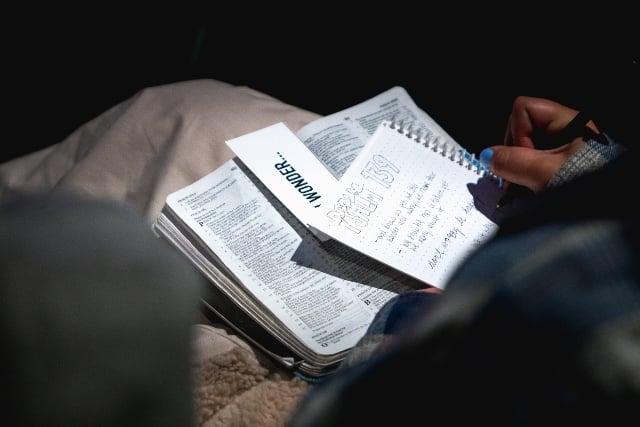
I know annotation can seem like a royal pain, but trust me, you’ll thank me later. Taking notes not only helps you understand the information more completely but also saves you a lot of time because you can easily find information later when you write your paper.
Remember, you’re writing a compare and contrast essay, so you’ll want to take notes on both the book and the movie to help you draw comparisons.
Taking notes if you do know the required focus of your paper
If you already know what you should be looking for, jot down everything that seems important about the assigned topic.
If I were taking notes on one or more characters in To Kill a Mockingbird, for instance, here are a few points I’d look for:
- Physical descriptions
- Personality traits
- Characters’ thoughts on events or other characters
- What motivates characters to complete specific actions
- Interactions between characters
- Types of characters (protagonist, antagonist, round, flat, etc.)
I might also include any questions about characters or sections that leave me a little confused or wondering, “Why in the world would the character do that?”
Though you’ll look for the same elements in both the book and the movie, you might end up with notes about completely different characters or character traits after watching the movie, especially if the film takes a lot of creative liberties and vastly differs from the book.
Don’t worry! A drastically different set of notes will likely serve you well—it’ll help you establish true comparisons between the novel and the film.
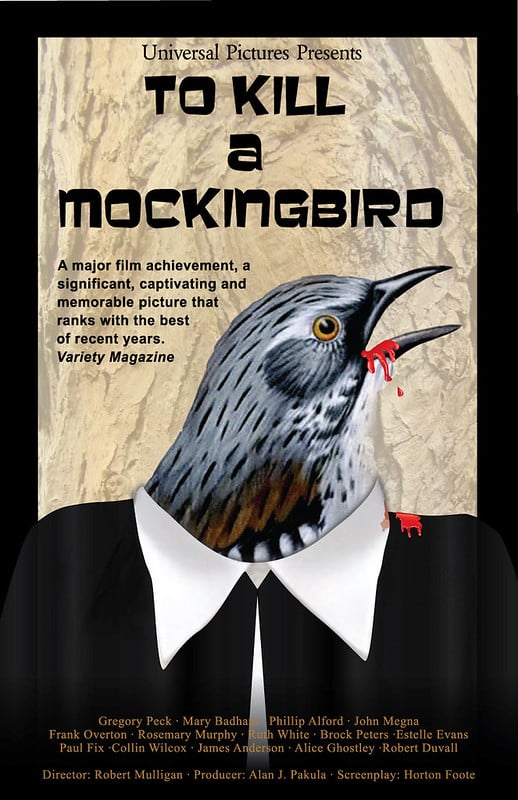
If I were writing about the film version of To Kill a Mockingbird, here’s one of the key points I’d note about the characters:
- There’s a distinct change in the treatment of characters, particularly Jem and Scout’s mother. In the novel, their mother is only mentioned briefly, but in the movie, Jem and Scout have a detailed conversation about their deceased mother.
Because I’m only taking notes, I may not have a clear sense of why, how, or even if this is important to the story yet. That’s okay. Remember, the point is to start developing ideas.
In this case, I may wonder if the mention of their mother in this scene is meant to foreshadow another conversation, if the mother will somehow play a larger role in the movie, or if this scene is only a way for the producers to help develop the story on film.
Taking notes if you don’t know the focus of your paper before you read the book or watch the movie
If you’re assigned to read a book and watch the movie but you don’t yet know what the actual essay assignment will be, it’s time to search your memory for the literary terms you’ve been discussing in class.
Take notes on literary devices, such as theme, character, symbolism, imagery, simile, and metaphor. (Notice how this essay about To Live analyzes, among other devices, character, plot, and tone.)
One important thing to remember about the process of note-taking is that you don’t want to become so overwhelmed with writing notes that you don’t even remember what you just read or watched. In other words, don’t take notes on everything. Limit your notes to a handful of key devices.
As you take notes, look for elements that appear identical in both versions, but also look for anything that seems strikingly different.
Don’t worry if you don’t end up using everything in your notes or if a point seems really important at first but ends up being insignificant. The purpose of annotation is to get your ideas down on paper. You can sort through them later.
Think about what it all means

After you’ve finished reading, watching, and note-taking, set everything aside for at least a day or two to think about what it all means.
A list of notes and a whole bunch of random similarities and differences are great, but they don’t provide any information about the significance of these points (and they don’t yet provide you with a focus for your essay).
Remember, the goal of a comparison essay isn’t to simply identify points that might be the same or different.
The goal is to analyze the differences and explain how any additions, omissions, or changes in the film change the story or its interpretation.
In my example of To Kill a Mockingbird, I might have listed questions about Mrs. Dubose. In the book, she’s a crabby, old, racist neighbor of Jem and Scout, and it is later revealed that she is struggling with a morphine addiction. She plays a much smaller role in the movie version of To Kill A Mockingbird, though, and the issue of addiction isn’t brought up.
In my notes, I may ask the following questions:
- Did the producers feel that Mrs. Dubose’s addiction simply wasn’t important enough to include in the film?
- Does the omission actually have an impact on the story?
- Could the changes to Mrs. Dubose’s character affect elements such as plot, theme, or characterization (or the viewer’s interpretation of characters)?
Sifting through your notes and random thoughts and questions can get messy, so to stay organized (and to help you develop your ideas even further) try various prewriting techniques. (A Venn diagram can be particularly useful when examining similarities and differences.)
Determine what is important enough to be included in your comparison essay
After you’ve organized your notes and developed some initial analysis, it’s time to decide what’s important enough to include in your essay.
Not every similarity or difference is worth noting in your paper. Include only relevant and significant points that make the greatest impact between the book and movie.
Here’s what I mean.
In To Kill a Mockingbird, there is little physical description of Atticus Finch, other than the facts that he’s about 50 years old, is tall, and wears glasses. In the 1962 movie adaptation starring Gregory Peck as Atticus Finch, Peck more or less fits this description. But in the movie, it’s evident that he parts his hair on the right (his right, not yours when looking at the image below).
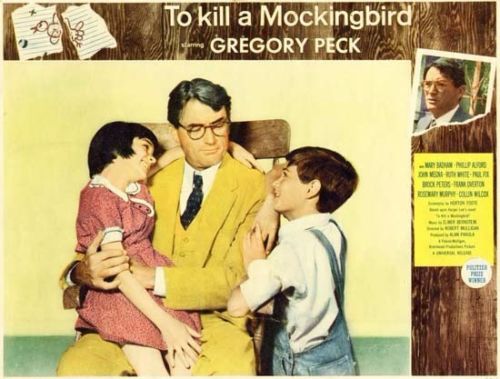
Though there is no description of how Atticus wears his hair in the novel, and his hairstyle is obviously visible in the movie, there’s no point in mentioning this in an essay that compares the book and movie. It’s an insignificant point. His hairstyle is not relevant and doesn’t influence or shape the story in any way.
Let’s say, though, that a character’s hairstyle in a book is described in detail because it’s part of the character’s personality or because it symbolizes freedom, rebellion, or strength.
If the movie changes the character’s hairstyle, in this case, the entire character could change. This would most certainly be a time to analyze the importance of a change in appearance from book to film.
To see how one writer analyzes significant differences between a book and its movie adaptation, read A Comparison of the Similarities and Differences Between The Princess Bride Film and Novel.
Find a focus and outline your ideas
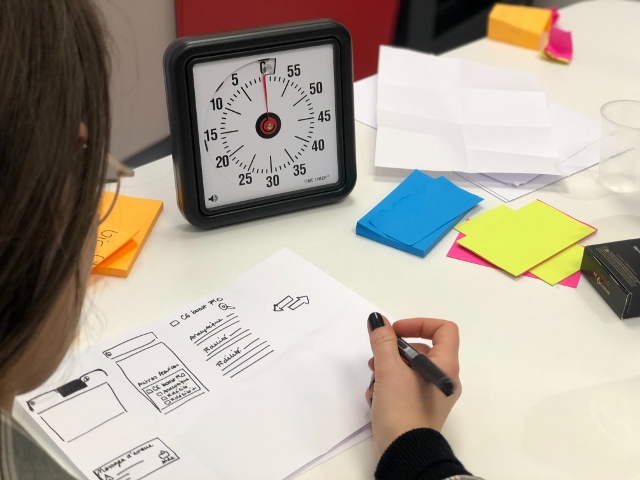
At this point, you have a solid list of relevant points to analyze, but you still don’t have a focus for your paper.
To start, develop a solid thesis statement.
Don’t write a bland statement like, “There are many similarities, but only a few differences between the book and movie.”
This doesn’t tell your readers anything about the true focus of your essay.
Instead, craft a thesis statement that is specific in its comparison and lets readers know exactly what you’ll be discussing.
In my essay about To Kill a Mockingbird, I might write the following thesis statement:
- Though the 1962 film adaptation of Harper Lee’s novel To Kill a Mockingbird is true to the themes of the original novel, its omission of minor characters leaves the audience with an incomplete understanding of the people and culture of Maycomb.
This thesis statement presents a clear roadmap for the essay and lets readers know the focus will be on the omission of characters and how they affect the story. (Want to see an effective thesis statement in action? Check out this essay from our library. It clearly illustrates why the writer feels The Great Gatsby novel is superior to the film adaptation.)
Once you’ve written your thesis statement, use it to provide guidance as you move to the next step of the writing process: outlining.
You’ll need roughly three or four key ideas and examples from the book and movie to support your claims.
If you’re looking for more specific information about outlines, read This Compare and Contrast Essay Outline Will Help You Beat Writer’s Block. The post also includes a compare and contrast essay outline template to help you get started.
Finally … Draft (and Revise and Edit) Your Comparison Essay
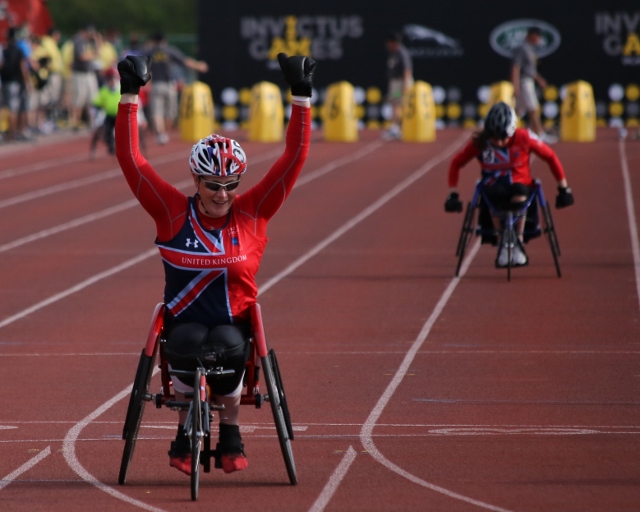
I know. It’s been a long journey, and at this point, you feel like you’ve just completed a marathon. The good news: it’s finally time to draft your essay.
Follow your outline to help you craft a catchy introduction, at least three body paragraphs to support your thesis, and an awesome conclusion.
To help you with the finer details of your draft, here are a few must-read posts:
- How to Start a Compare and Contrast Essay on the Right Foot
- 13 Compare and Contrast Thesis Statements to Inspire You
- Compare and Contrast Essay Tips From a Kibin Editor
- How to Revise an Essay and Make It Better Than Ever
Have a completed essay but aren’t sure whether you’ve focused enough on analysis or whether you’ve included significant points in your comparison? Let a Kibin editor take a look at your essay. We’ve edited tens of thousands of essays and can help you with your book and movie comparison essay too.
